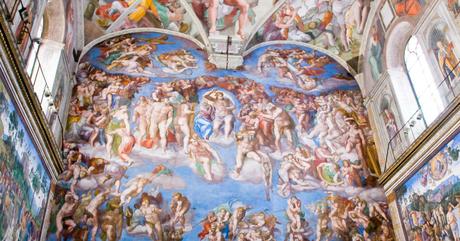
The Sistine Chapel is world-famous for its intricately painted ceiling. Art lovers flock to the religious building during their time in Rome to witness one of the most important pieces of art in history.
Built back in 1479 by Pope Sixtus IV, the Chapel is located next to the impressive edifice of St Peter’s Basilica in the Vatican. Its original purpose was to host cardinals of the Catholic Church when the election of a new Pope took place, and it is still used for this today.
When it was first built, the ceiling in the Chapel was simply painted in blue with a smattering of golden stars – all very innocuous. The walls were a little more exciting and featured colourful frescoes by some of Italy’s most renowned artists of the time, including the likes of Pietro Perugino, who painted Christ Delivering the Keys to St. Peter in 1482.
It wasn’t until 1508 that the pope of the time, Pope Julius II, got in touch with Michelangelo and asked him to re-do the ceiling of the chapel. But, because he was known as a sculptor, Michelangelo was initially very hesitant to take on the commission as he was busy working on masterpieces like the Pieta and David.
But Pope Julius persisted and, eventually, Michelangelo caved and said he would paint the ceiling of the Chapel. With the help of a theologian from the Vatican, the design for the ceiling of the Sistine Chapel was planned to recreate several scenes from the Old Testament, beginning early with the Creation of the World and finishing with the story of Noah and the Flood.
The most famous scenes of the painted ceiling are of the Creation of Adam and the Fall of Adam and Eve from the Garden. These are the two most prominent pieces that visitors flock to see in person.
If you’ve been to the Sistine Chapel, you’ll notice that the ceiling is broken up into triangle-shaped segments. In between each segment, there are painted figures that represent those of Old Testament prophets as well as pagan sibyls who predicted the coming of a savior in ancient times. One of the sibyls stands out the most, sitting down with her body twisting close to a book, appearing to look in the direction of the altar in the chapel.
When you take the time to really examine the ceiling in the Sistine Chapel, you can clearly see the different scenes from the Old Testament playing out, something that Michelangelo has executed perfectly despite his prominence as a sculptor, not a painter.
Advertisements
